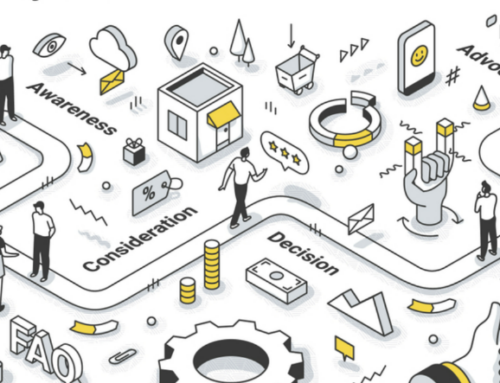A number of powerful factors are reshaping the banking industry, such as high customer expectations, regulatory requirements and technological capabilities, and all those together make change imperative.
Retail banking should be the starting point of that change.
To branch or not to branch
We live in 2021 and, according to the research of BankMyCell, as much as 67% of the world population has mobile devices, which means that no one with a phone has to go to the bank or at least they do not need to in order to start dealing with the bank.
The first reason for this is the fact that today various banking services can be used through mobile and web applications as retail banking is increasingly becoming first digital offer.
The second reason is that clients generally use various online channels for day-to-day life, and online bank services allow them to easily and quickly establish contact with the bank, making their lives much easier.
Having said that, we can easily assume that branches are history and that we don’t need them at all.
But the truth is that we need to understand “the big picture” and how retail relationship between bank and its clients will shift before we jump to any conclusions.
So, let’s see first how digitalization affects branches.
How Does Digitalization Reflect on Branches?
Digitalization and, especially, the omni-channel customer approach within banking industry can easily lead us to assume that, instead of increasing the number of branches, it is more important to improve the level of digitalization.
And this is true in many cases because today customers are ready to start engaging with the bank through online channels faster than ever before.
Currently, we are witnessing that banks have recognized the market shift (especially in the last year) and the need to evolve & improve their distribution models according to customer needs by becoming a digital-first bank.
But…
Even though digitalization brought us some comfortable solutions we all need, studies have shown that human interaction has become more important than ever in building trust and long-lasting relationships as banking products are becoming more complex year over year and not easily understandable by the clients.
And this is where branches come into the big picture.
The future of Branches
Let us be clear with one thing: clients do enjoy using internet and other online channels through which they can use certain services, from the basic ones such as bank account opening to taking a loan or a mortgage.
This is not actually the future – it’s today’s reality that shapes the future of branches from the central point of customer-bank interaction to the point where branches become a consultative and educational center from which clients can get the knowledge about possible solutions available to them.
That is exactly how we see the future of branches, shifting from customer centers to the advisory role.
Refresh the Communication with Customers
With the whole shift and digital-first approach, banks have a great potential to innovate new formats, as well as to develop digital sales processes and bundled products and services in a fully personalized way.
That will enable the banks to further refresh the communication with customers and start utilizing the full potential of the omnichannel solutions and unified user experience.
One of the possible innovations, which can help any bank to significantly improve its business and user experience, is a proper digital-banking omnichannel strategy, which will enable customers to start communication with the bank through one and finish it through another channel in a fully seamless way, shifting the bank role from administrative to consultative.
This is where Asseco comes into the big picture.
Asseco and their DigitalBanking brand provides a solution that offers a personalized and unified banking experience over multi-channels.
What is important to point out is that this digital banking solution helps both clients and banks: on the one hand, clients will be able to perform certain bank services faster and easier (like get digitally onboard in less than 9 minutes) and will not have to worry about their personal data, because they are completely protected, and on the other hand, banks will improve customer experience and achieve greater customer satisfaction and loyalty.
What Should Bankers Be Aware of in 2021?
According to the research of PwC, social media will become the main medium for connecting, engaging and informing clients about bank services in 2021. Therefore, the operation of banks and their branches will change significantly in the future as information technology will help them provide more digital services in fully automatized way.
Therefore, it is necessary to supplement branch operation with state-of-the-art digital systems through which various banking services can be performed.
As we said above, it is not an easy task to say what will happen in the future for certain (no one can know for sure what the future of bank branches will look like), but bankers should be aware of few things regarding future affiliates, which provide developed digital services, that will:
- offer clients a wider range of services, compared to those that were available in the past;
- enable faster performance of services;
- be flexible in terms of design, keeping pace with changing customer requirements, while maintaining low costs.
This means that banks need to innovate their systems in order to reach their full potential and provide customers with a pleasant user experience through digital channels.
What Are the Implications for Staff and Customers if Branches Were to Disappear?
After the end of the Covid-19 pandemic, one of the most significant changes in recent years in many cities was the disappearance of branches. We could regularly hear news about their closure, while the exodus from the cities due to COVID-19 drastically aggravated the existing trend. According to the consumer body of Which?, nearly 4,188 branches have been closed in the United States since 2015. That is an average of 50 branches each month.
During the pandemic, a large number of people were able to perform all banking services via digital channels in a very simple and fast way without any problems. It is believed that this number will increase in the future, and banks will not have to pay for expensive infrastructure.
So, having classical branches that we know will not be as profitable in the future as it was in the past because of digital services scalability and shift of communication.
This means that many manual processes will be replaced with digital solutions and AI tools so, if you are currently working in the banking industry, this would be a good time for you to start shifting your role from administrative to advisory.
Key Responsibility of the Banking Retail Manager in the Future
Retail managers are important figures because they shape various factors that contribute to the efficiency of the branch.
In addition to organizing staff who must be professionally trained and instructed in all bank services in order to advise customers properly, the retail manager performs marketing tasks and strives to make banking services efficient.
Since digital access to services is very common and interactions between banking staff and customers are significantly reduced, retail managers will have to improve the provision of digital services in the future.
They need to consider different options to improve the online user experience. According to the research of McKinsey&Company, filling out forms for a particular product through a website increased by 25%, while 40% more credit cards were sold through online applications. Customers will go digital only if retail managers manage to provide them with the right offer through efficient digital channels.
Also, what we see as a trend is that retail managers should have a digital-first marketing strategy, which will replace the old marketing tactics – such as displaying promotional materials – with the new ones, such as smart campaigning, for example.
It seems that the retail manager will have a bigger role in the future, compared to the past. If you are in the said position, think ahead and figure out ways you could improve your digital services offer.
Wondering how to start? Ask the experts:
ASEE is a digital banking solution provider with vast experience in implementing different solutions in banks of various sizes and markets. For a free consulting call or more information get in touch.






